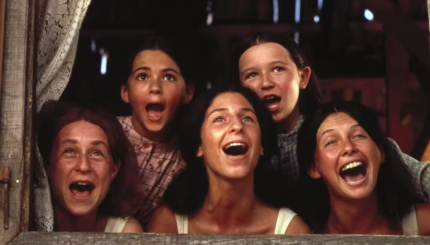At most traditional Jewish weddings, just before the wedding ceremony itself, the groom veils the bride. This is often an exciting and emotionally charged moment, especially when the groom and bride have observed the custom of not seeing each other for days before their wedding. The groom is danced by male friends to the bride who sits on a throne-like chair. The men arrive with raucous singing, and the groom veils the bride. Sometimes the bride and groom’s parents give blessings to their child and their soon-to-be son/daughter-in-law. This brief ceremony is called the bedeken.
Are you planning a Jewish wedding? Let us help out! Sign up for Breaking the Glass, an email series that will help guide you to the wedding that’s right for you!
For many years the bedeken was not particularly popular outside Orthodox circles. The veil was, for feminists, tied to some troubling ideals of modesty for women, and many women still eschew the tradition of wearing a veil, or being veiled. However, in recent years, some couples have come back to the bedeken, often tweaking the ceremony to suit their tastes and beliefs. Here are some ideas for creating a progressive and meaningful bedeken ceremony:
Bedeck Each Other
Many couples make the ceremony more egalitarian by having both bride and groom clothe each other. The groom veils the bride, and the bride helps the groom into a kittel or tallit, or places a kippah on his head. Covering one another can be a sign of recognition of the holy and awe-filled time; an enactment of how precious bride and groom are to each other; a statement of the bride and groom’s willingness to care and provide for each another; a wish for God’s protection from around and above.
In this bedeken ceremony, called “Noticing Each Other,” the groom and bride adorn one another with kippot and flowers, and recite to each other lines from Song of Songs.
Keep the Veil Out Of It
It’s also possible to have a bedeken ceremony without doing any veiling at all. This ceremony is designed to help the couple and their close family focus on the meaning of the moment they are about to enter, in just a few minutes, under the huppah. The bride and groom stand back to back and receive blessings–some biblical, some personal–from their families. Then the bride and groom turn to face each other, and are invited to take each other’s hands. The rabbi points out that this is the moment when the parents send their children forth from their family of origin so that they may make their own family. All they have tried to teach and all their love goes with these adult children who will soon commit their lives to each other.
Another veil-free bedeken was written for two brides. They walk into the room with their eyes closed, and are guided to stand back to back. After their mothers offer blessings to the brides, the rabbi invites the brides to turn and face each other, and to “really see each other, as if for the first time: See who she is and who she is not – recognize that you accept and welcome her as your beloved just as she is, and believe in your heart that she accepts and welcomes you just as you are.”
Taking Care of Business
Some couples expand the bedeken to involve some of the legalities that might otherwise be taken care of in private before the wedding or at a tisch (groom’s reception). For example, at my own bedeken (part of a liberal Orthodox wedding ceremony), my soon-to-be-husband and I were both danced by our friends to a table where we publically signed our civil marriage document, our halachic prenuptial agreement, and our ketubah. I presented my groom with his wedding ring at this point, to serve as the legal consideration making the ketubah binding. Then he lowered my veil and we were set to be wed.
The bedeken is a fluid ceremony with plenty of room for innovation. It can take place with a small group of close family and friends, or it can be totally public, with all the wedding guests watching. Working together with their officiants, couples can adapt the bedeken to best prepare themselves for their own wedding ceremony, and–if they wish–to help set the mood for their guests.
bedeken
Pronounced: buh-DEK-in, Origin: Yiddish, part of a traditional Jewish wedding ceremony, when the groom symbolically checks under the bride’s veil to make sure he is marrying the right person, an allusion to Jacob accidentally marrying Leah, instead of Rachel, in the Torah.
ketubah
Pronounced: kuh-TOO-buh, Origin: Hebrew, the Jewish wedding contract.



